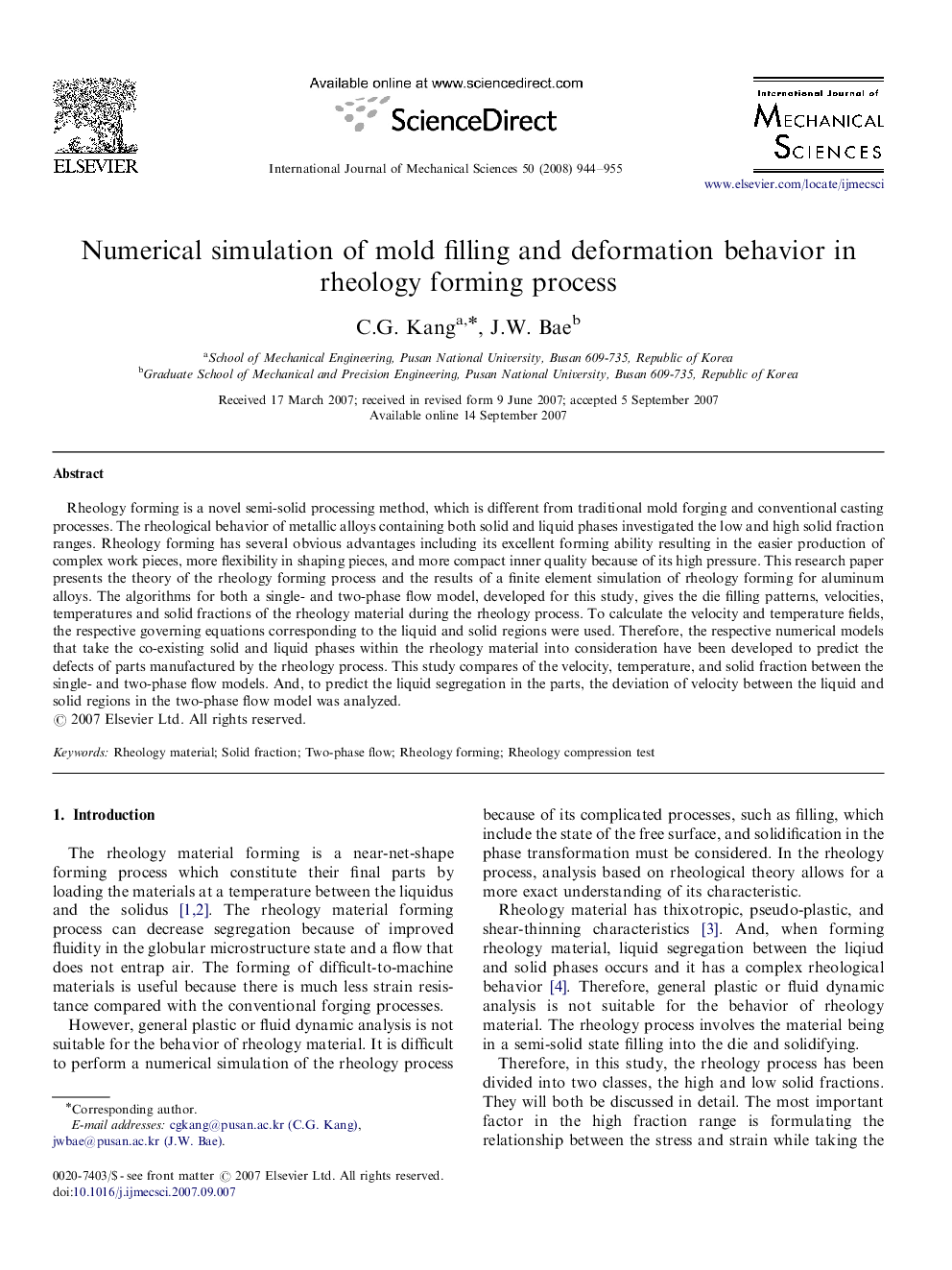| Article ID | Journal | Published Year | Pages | File Type |
|---|---|---|---|---|
| 782817 | International Journal of Mechanical Sciences | 2008 | 12 Pages |
Rheology forming is a novel semi-solid processing method, which is different from traditional mold forging and conventional casting processes. The rheological behavior of metallic alloys containing both solid and liquid phases investigated the low and high solid fraction ranges. Rheology forming has several obvious advantages including its excellent forming ability resulting in the easier production of complex work pieces, more flexibility in shaping pieces, and more compact inner quality because of its high pressure. This research paper presents the theory of the rheology forming process and the results of a finite element simulation of rheology forming for aluminum alloys. The algorithms for both a single- and two-phase flow model, developed for this study, gives the die filling patterns, velocities, temperatures and solid fractions of the rheology material during the rheology process. To calculate the velocity and temperature fields, the respective governing equations corresponding to the liquid and solid regions were used. Therefore, the respective numerical models that take the co-existing solid and liquid phases within the rheology material into consideration have been developed to predict the defects of parts manufactured by the rheology process. This study compares of the velocity, temperature, and solid fraction between the single- and two-phase flow models. And, to predict the liquid segregation in the parts, the deviation of velocity between the liquid and solid regions in the two-phase flow model was analyzed.
